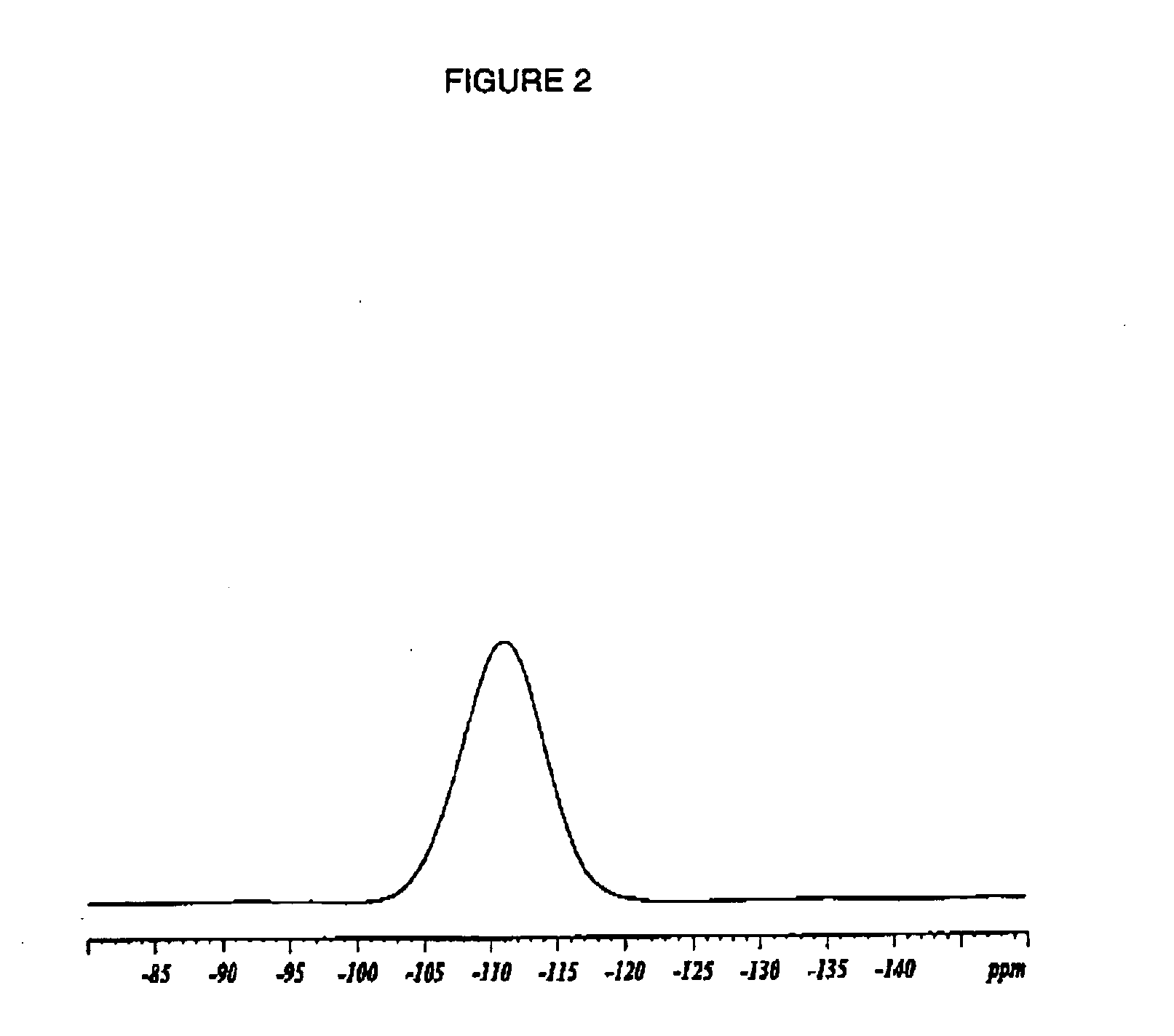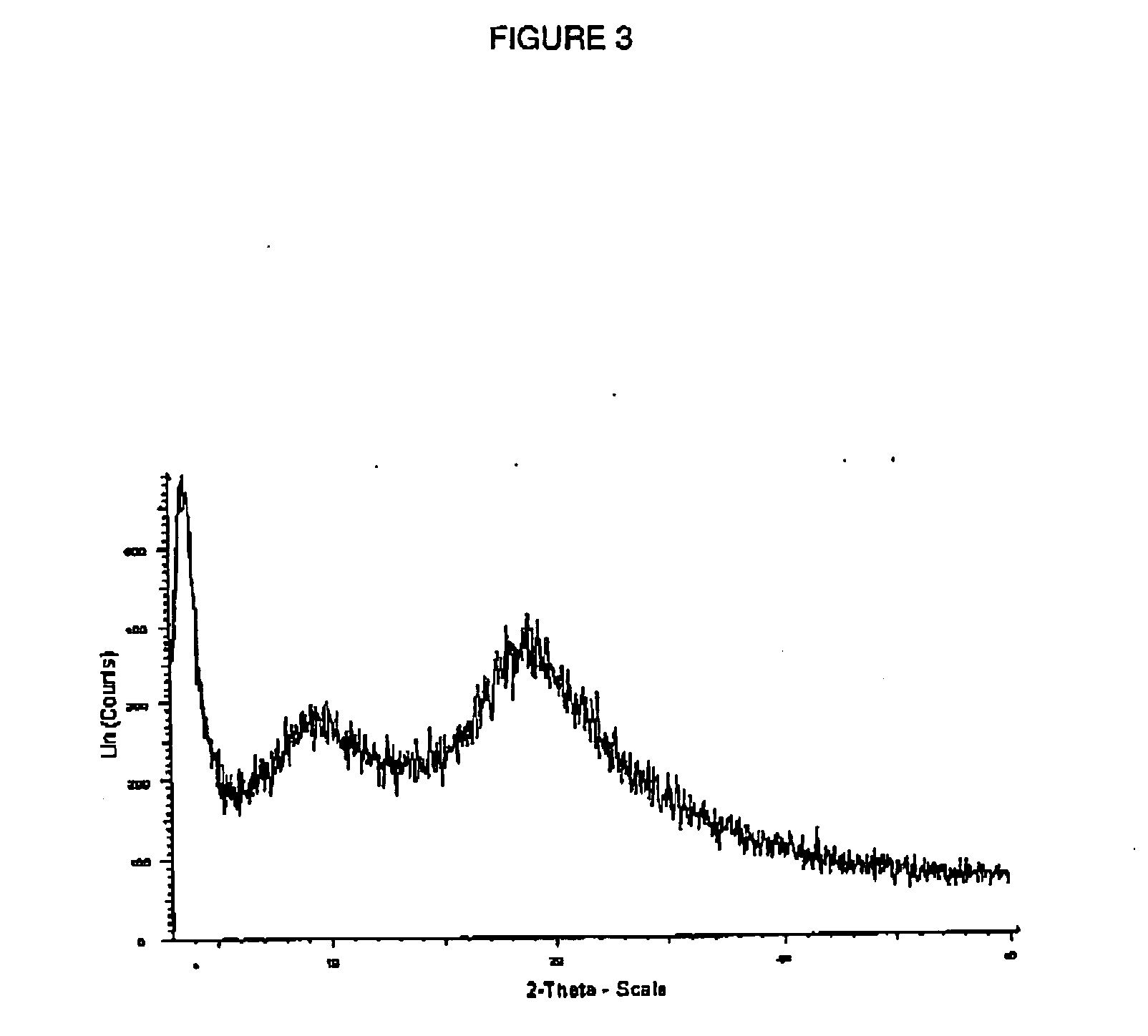Process for forming amorphous atorvastatin
a technology of amorphous atorvastatin and amorphous atorvastatin, which is applied in the field of forming amorphous atorvastatin, can solve the problems of inoptimal production capacity and current processes for producing amorphous atorvastatin, and achieve the effects of reducing the amount of solvent needed, improving the efficiency of the process for forming amorphous materials, and good solubility in hydroxyl solvents
- Summary
- Abstract
- Description
- Claims
- Application Information
AI Technical Summary
Benefits of technology
Problems solved by technology
Method used
Image
Examples
example 1
Amorphous atorvastatin was prepared by a spray-drying process using the following procedure. A 50 g sample of atorvastatin hemicalcium trihydrate (U.S. Pat. No. 5,273,995) was dissolved in 950 g of methanol to form feed solution comprising 5 wt % atorvastatin. The feed solution was pumped by a high-pressure gear pump (Bran Luebbe N—P31) to a Niro PSD-1 Spray-Dryer with a liquid feed process vessel and a pressure nozzle (Model SK 76-16 from Spraying Systems, Inc.). The dryer was also equipped with a 9-inch drying chamber extension to increase the length and volume of the dryer's drying chamber. The added length increased the particle residence time within the dryer. The dryer was also equipped with gas-dispersing means for introduction of the drying gas to the drying chamber. The gas-dispersing means consisted of a plate coextensive with the interior of the drying chamber (about 0.8 m diameter) and bearing a multiplicity of 1.7 mm perforations occupying about 1% of the surface area ...
example 2
Amorphous atorvastatin was prepared using the spray drying process of Example 1 except that the spray solution consisted of 1396 g of atorvastatin dissolved into 26524 g of methanol to form a 5 wt % solution. The spray solution was pumped to the spray drier at a rate of 170 g / min and at an atomization pressure of 10 atm (135 psig). The process resulted in the formation of amorphous atorvastatin. After drying, the material had a residual solvent level of less than 0.08%.
The material was evaluated using solid state 19F NMR as follows: Approximately 75 mg of sample were tightly packed into a 4 mm ZrO spinner for each sample analyzed. One-dimensional 19F spectra were collected at 295° K and ambient pressure on a Bruker-Biospin 4 mm BL CPMAS probe positioned into a wide-bore Bruker-Biospin Avance DSX 500 MHz NMR spectrometer. Rotors containing the analyzed samples were positioned at the magic angle and spun at 15.0 kHz, corresponding to their maximum specified spinning speed. The fast...
PUM
| Property | Measurement | Unit |
|---|---|---|
| wt % | aaaaa | aaaaa |
| mean average diameter | aaaaa | aaaaa |
| mean average diameter | aaaaa | aaaaa |
Abstract
Description
Claims
Application Information
 Login to View More
Login to View More - R&D
- Intellectual Property
- Life Sciences
- Materials
- Tech Scout
- Unparalleled Data Quality
- Higher Quality Content
- 60% Fewer Hallucinations
Browse by: Latest US Patents, China's latest patents, Technical Efficacy Thesaurus, Application Domain, Technology Topic, Popular Technical Reports.
© 2025 PatSnap. All rights reserved.Legal|Privacy policy|Modern Slavery Act Transparency Statement|Sitemap|About US| Contact US: help@patsnap.com



